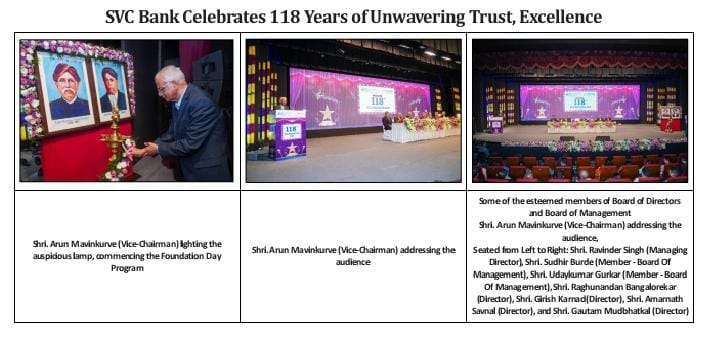Unlocking Growth – Real Estate’s Wish-list for Union Budget 2024-25


Anuj Puri, Chairman – ANAROCK Group
With Union Budget 2024-25 set to be tabled in July, the real estate sector pins renewed hope on the Modi 3.0 regime. Expectations are high for tax reliefs and other sentiment boosters. The future of the overall industry also depends on unfettered infrastructure deployment to support and improve urban living standards as well as to develop and promote newer areas.
Will the government finally decide to give in to the long-standing demand for industry status for the entire housing sector? Will it take 'real' measures to revive the affordable housing segment, which has been on a steady decline after the pandemic?
The Indian housing sector remained upbeat in 2024 till date, with housing sales and new launches creating new peaks in the top 7 cities. Sales reached an all-time high at about 4.93 lakh units in FY23-24, while 4.47 lakh units were launched.
However, this momentum must continue in the future too – and the current growth trajectory is skewed towards mid-range and premium housing. Considering the specific housing needs of India’s lower-income groups, this momentum cannot ride solely on higher-priced homes while affordable housing continues to languish.
As per ANAROCK Research, the sales share of affordable housing reduced significantly after COVID-19 – from over 26% in 2022 and over 38% in 2019 to approx. 20% in Q1 2024. Due to low demand, this segment’s share of the overall housing supply in the top 7 cities also fell to 18% in Q1 2024, from nearly 40% in 2019.
Many interest stimulants previously extended to buyers and developers of affordable housing have expired in the last two years. This important segment must be revived with high-impact measures like tax breaks – for developers, so that they will focus more on affordable housing, and for buyers to improve affordability.
Other Measures to Reignite Affordable Housing:
- Credit-linked Subsidy Scheme under PMAY
This scheme for EWS/LIG, which expired in 2022, should be revived to incentivize first-time buyers of affordable homes across cities. This will once again invigorate demand in this segment. Subject to criteria specified under government guidelines, CLSS was previously available for housing loans to EWS/LIG buyers in new constructions, and for the addition of rooms, kitchen, toilet etc. to existing dwellings. Also, under PMAY (Rural), one could avail of this subsidy for all 'kaccha' homes being converted into 'pucca' ones, provided they fulfill the eligibility criteria.
Re-introduce 100% Tax Holiday for Affordable Housing Developers
To boost supply and incentivize developers to build more affordable housing, the government can re-introduce the ‘100% Tax Holiday’ benefit they previously enjoyed under section 80-IBA in the Finance Act, 2016. This section provided for major tax relief on the profits earned from developing and building affordable housing projects.
- Tweak Definition of Affordable Housing Criteria to Widen Additional Deductions Benefits to More Buyers
According to the Ministry of Housing and Urban Poverty Alleviation, affordable housing is defined based on property size, price, and buyers’ income. For instance, affordable housing is a house or flat with carpet area up to 90 sq. m. in non-metropolitan cities and towns, and 60 sq. m. in major cities and valued up to INR 45 lakh for both. The central bank’s definition, on the other hand, is based on the loans given by banks to people for building a house or buying apartments.
The government must seriously reconsider revising the pricing of homes within the affordable housing budget, taking into consideration city-specific market dynamics. As per the current definition, the size of units at 60 sq. m. carpet area is appropriate. However, prices of units (up to INR 45 lakh) are not viable across most cities.
For instance, for a city like Mumbai, a <INR 45 lakh budget is meaningless. It would need to be increased to at least INR 85 lakh. In other top cities, the budget should be increased to at least INR 60-65 lakh. With such price revisions, more homes would qualify for the affordable price tag, so more buyers can avail of benefits such as lower GST rates at 1% without ITC, government subsidies, etc.
Additional Budget Expectations:
- Rationalization of GST Rates for Under-construction Properties
The real estate sector has been urging the government to rationalize the GST rates for under-construction properties. The current rate of 12% without input tax credit (ITC) is considered high and deters buyers from investing in under-construction homes. A reduction in GST rates, or reinstatement of ITC, would make under-construction properties more attractive, thereby boosting sales and easing the financial burden on buyers.
- Single-window Clearance System
Introducing a single-window clearance system for all real estate projects can significantly reduce project delays and enhance ease of doing business. This system would streamline approvals and clearances, reducing the bureaucratic red tape that often hinders timely project completion.
- Extension of Tax Benefits under Section 24(b) and 80EEA
Enhancing the tax benefits for homebuyers under Section 24(b) (interest on home loan) and Section 80EEA (additional deduction for interest on home loan for first-time buyers) can make home loans more affordable. Increasing the deduction limit under these sections will encourage more people to invest in real estate, particularly in the affordable housing segment.
- Incentives for Green and Sustainable Housing
Promoting green and sustainable housing projects through tax incentives and subsidies can address environmental concerns while fostering innovation in the construction sector. These incentives could include tax rebates for developers adopting eco-friendly practices and for buyers investing in energy-efficient homes.
- Infrastructure Status for the Real Estate Sector
Granting infrastructure status to the real estate sector has been a long-standing demand. This move would enable developers to access funds at lower interest rates and avail of other financial benefits. Infrastructure status would also streamline regulatory processes and improve overall project viability.
Hospitality Sector
- The hospitality sector needs the Union Budget to prioritize tax reduction, faster infrastructure development and improvement – especially in the newly developing tourism zones – and significantly upgraded tourism promotion.
- A reduction of GST, funding for skills development, and incentives to invest in sustainable tourism are also high on the wish-list.
- To further increase local and international tourism, the industry needs airports in dire need of upgradation to be paid immediate attention..
- In previous union budgets, the Indian hospitality industry has consistently sought industry status to obtain advantages such as simplified rules, tax breaks, and subsidies, as well as better access to capital. Expansion, improving infrastructure, and reducing bureaucratic impediments would all be easier with this status. The industry's substantial contributions to GDP, employment, and foreign exchange revenues make it very deserving of such recognition. The industry can't progress sustainably without industrial status to help drive its growth.
By addressing these key areas, the Union Budget 2024-25 can provide the much-needed impetus to the real estate sector, ensuring sustainable growth and development across all segments.







